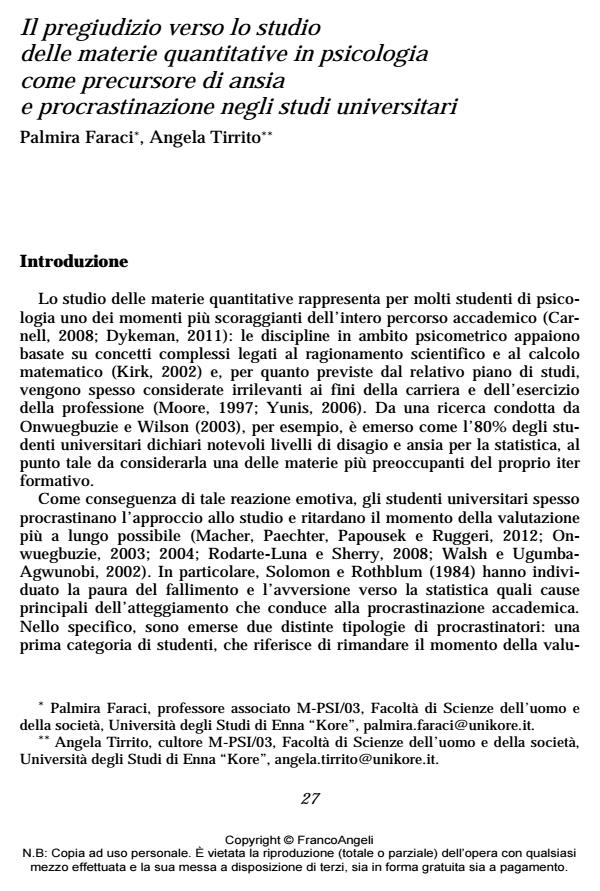Il pregiudizio verso lo studio delle materie quantitative in psicologia come precursore di ansia e procrastinazione negli studi universitari
Titolo Rivista CADMO
Autori/Curatori Palmira Faraci, Angela Tirrito
Anno di pubblicazione 2016 Fascicolo 2015/2
Lingua Italiano Numero pagine 19 P. 27-45 Dimensione file 161 KB
DOI 10.3280/CAD2015-002004
Il DOI è il codice a barre della proprietà intellettuale: per saperne di più
clicca qui
Qui sotto puoi vedere in anteprima la prima pagina di questo articolo.
Se questo articolo ti interessa, lo puoi acquistare (e scaricare in formato pdf) seguendo le facili indicazioni per acquistare il download credit. Acquista Download Credits per scaricare questo Articolo in formato PDF

FrancoAngeli è membro della Publishers International Linking Association, Inc (PILA)associazione indipendente e non profit per facilitare (attraverso i servizi tecnologici implementati da CrossRef.org) l’accesso degli studiosi ai contenuti digitali nelle pubblicazioni professionali e scientifiche
The purpose of the present study was to investigate the influence of students’ attitude towards learning quantitative disciplines on statistics anxiety and academic procrastination. Participants were 142 graduate students attending a required psychometric course (23.2% male, 76.8% female), with a mean age of 21.5 (SD=4.54). Data were collected administering a 15-item ad hoc questionnaire. Both exploratory and confirmatory factor analyses were conducted to gather construct validity of the constructing measure. Multiple regression analyses were applied to study what are the relationships between the observed variables. According to our results, the administered scale revealed promising psychometric properties, in terms of structural validity and internal consistency reliability. As expected, false beliefs significantly predict academic procrastination by the mediation of statistic anxiety. Implications for educational interventions aimed at improving achievement are provided.
Parole chiave:Academic procrastination, statistics anxiety, student attitude, quantitative disciplines, educational interventions
- Psychometric Properties of Statistics Anxiety Measures: A Systematic Review Palmira Faraci, Gaia Azzurra Malluzzo, in Educational Psychology Review 56/2024
DOI: 10.1007/s10648-024-09897-8
Palmira Faraci, Angela Tirrito, Il pregiudizio verso lo studio delle materie quantitative in psicologia come precursore di ansia e procrastinazione negli studi universitari in "CADMO" 2/2015, pp 27-45, DOI: 10.3280/CAD2015-002004